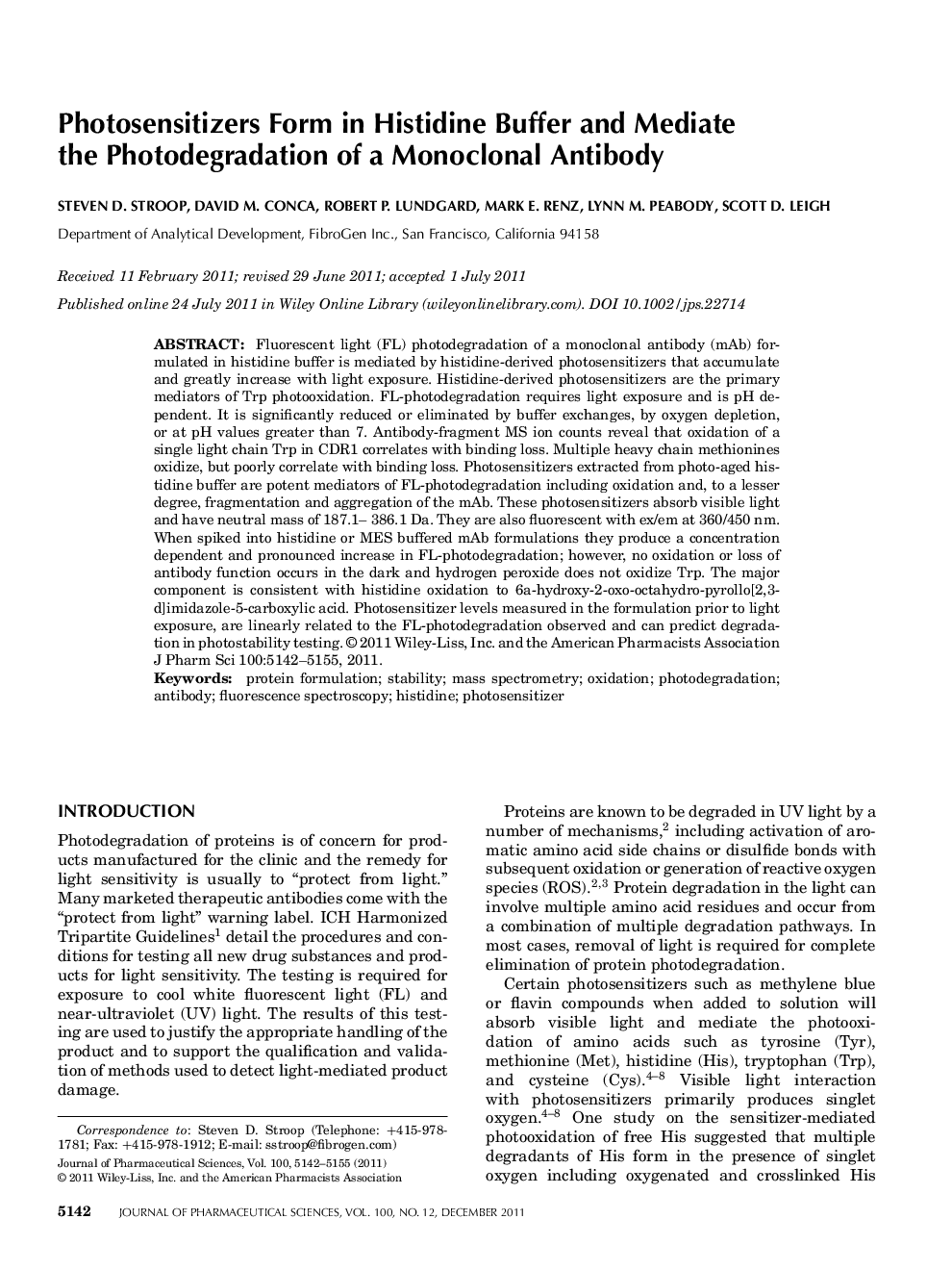| Article ID | Journal | Published Year | Pages | File Type |
|---|---|---|---|---|
| 2486136 | Journal of Pharmaceutical Sciences | 2011 | 14 Pages |
Abstract
Fluorescent light (FL) photodegradation of a monoclonal antibody (mAb) formulated in histidine buffer is mediated by histidineâderived photosensitizers that accumulate and greatly increase with light exposure. Histidineâderived photosensitizers are the primary mediators of Trp photooxidation. FLâphotodegradation requires light exposure and is pH dependent. It is significantly reduced or eliminated by buffer exchanges, by oxygen depletion, or at pH values greater than 7. Antibodyâfragment MS ion counts reveal that oxidation of a single light chain Trp in CDR1 correlates with binding loss. Multiple heavy chain methionines oxidize, but poorly correlate with binding loss. Photosensitizers extracted from photoâaged histidine buffer are potent mediators of FLâphotodegradation including oxidation and, to a lesser degree, fragmentation and aggregation of the mAb. These photosensitizers absorb visible light and have neutral mass of 187.1- 386.1 Da. They are also fluorescent with ex/em at 360/450 nm. When spiked into histidine or MES buffered mAb formulations they produce a concentration dependent and pronounced increase in FLâphotodegradation; however, no oxidation or loss of antibody function occurs in the dark and hydrogen peroxide does not oxidize Trp. The major component is consistent with histidine oxidation to 6aâhydroxyâ2âoxoâoctahydroâpyrollo[2,3âd]imidazoleâ5âcarboxylic acid. Photosensitizer levels measured in the formulation prior to light exposure, are linearly related to the FLâphotodegradation observed and can predict degradation in photostability testing.
Keywords
Related Topics
Health Sciences
Pharmacology, Toxicology and Pharmaceutical Science
Drug Discovery
Authors
Steven D. Stroop, David M. Conca, Robert P. Lundgard, Mark E. Renz, Lynn M. Peabody, Scott D. Leigh,
